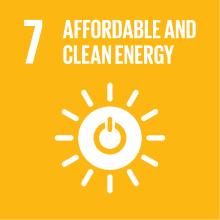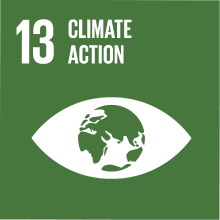CONTEMPORARY PHOTOGRAPHY
- Academic year
- 2024/2025 Syllabus of previous years
- Official course title
- CONTEMPORARY PHOTOGRAPHY
- Course code
- EM3A22 (AF:518577 AR:288264)
- Teaching language
- English
- Modality
- On campus classes
- ECTS credits
- 6
- Degree level
- Master's Degree Programme (DM270)
- Academic Discipline
- L-ART/03
- Period
- 4th Term
- Course year
- 2
- Moodle
- Go to Moodle page
Contribution of the course to the overall degree programme goals
Expected learning outcomes
Pre-requirements
Contents
Referral texts
(This book provides a historical-theoretical contextualisation of photography)
1. David Bate, “Photography: The Key Concepts”, Berg, Oxford and New York, 2009.
(These essays elaborate on the topics covered during the course and will be discussed in class)
2. Siobhan Angus, ‘Mining the History of Photography’, in Kevin Coleman and Daniel James (eds.), “Capitalism and the Camera: Essays on Photography and Extraction”, Verso, London and New York, 2021, pp. 125-163.
3. Ariella Aïsha Azoulay, ‘Toward the Abolition of Photography’s Imperial Rights’, Kevin Coleman and Daniel James (eds.), “Capitalism and the Camera: Essays on Photography and Extraction”, Verso, London and New York, 2021, pp. 70-124.
4. Nadia Bozak, ‘Digital images and the Cost of Resource Extraction’, in Boaz Levin, Esther Ruelfs, Tulga Beyerle (eds.), “Mining Photography: The Ecological Footprint of Image Production”, Spector Books, Leipzig, 2022, pp. 151-160 [Find the book in the library: BAUM 779.93637 MINEF].
5. Susanne Lange, ‘Traditions in Photographic History’, in “Bernd and Hilla Becher: Life and Work”, MIT Press, Cambridge (MA) and London, 2007, pp. 75-83.
6. Bruno Lessard, ‘After Nature: Aerial Photography in the Anthropocene’, in “Kritische Berichte”, vol. 45, no. 2 (2017), pp. 36-45.
7. Boaz Levin, Katrin Schönegg, ‘Image Ecology: An Introduction’, in Boaz Levin and Katrin Schönegg (eds.), “Image Ecology”, Spector Books, Leipzig, 2023, pp. 53-63.
8. Patricia Macdonald (ed.), ‘Surveying the Anthropocene’, in “Surveying the Anthropocene: Environment and Photography Now”, Edinburgh University Press, Edinburgh, 2021, pp. 1-25 [Find the book in the library BAUM 779.93637 SURAE].
9. Nicholas Mirzoeff, ‘Visualizing the Anthropocene’, in “Public Culture”, vol. 26, no. 2 (April, 2014), pp. 213-232.
10. Gisela Parak, ‘Seeing the “Other”? Pictorial Practices of a Colonial Appropriation of Space’, in “International Journal for History, Culture and Memory”, vol. 11, nos. 1-4 (2023), pp. 1-14 [especially up to page 9].
11. Arturo Carlo Quintavalle, ‘Viaggio in Italia. Notes’, in Luigi Ghirri, Gianni Leone, Enzo Velati (eds.) “Viaggio in Italia”, Quodlibet, Macerata, 2024, pp. 11-15 (English translation) [1st ed. Il Quadrante, Alessandria, 1984].
12. Britt Salvesen, ‘New Topographics’, in “New Topographics”, Steidl, Göttingen, 2009, pp. 11-67.
13. Allan Sekula, ‘Dismantling Modernism, Reinventing Documentary (Notes on the Politics of Representation)’, in “The Massachusetts Review”, vol. 19, no. 4, Photography (Winter, 1978), pp. 859-883.
Assessment methods
Type of exam
Grading scale
- 0 marks: insufficient or missing answer;
- 1-2 points: sufficient answer, but not totally correct or incomplete;
- 3-4 points: fair to good answer, depending on the degree of details and the correctness of the language;
- 5 marks: very good to excellent (with distinction) answer.
You achieve the maximum grade (30/30, with or without distinction) by answering all questions optimally.
A pass mark (18/30) is achieved by answering at least four out of six questions correctly and comprehensively.
Teaching methods
Further information
Ca’ Foscari follows the Italian law (Law 17/1999; Law 170/2010) for the support and accommodation services available to students with disabilities or specific learning disabilities. If you have either a motor, visual, hearing or another disability (Law 17/1999), or a specific learning disorder (Law 170/2010) and you require support (classroom assistance, technological aids for carrying out exams or personalised exams, accessible format material, note retrieval, specialist tutoring as study support, interpreters or other), please contact the Disability and DSA office disita@unive.it.
2030 Agenda for Sustainable Development Goals
This subject deals with topics related to the macro-area "Climate change and energy" and contributes to the achievement of one or more goals of U. N. Agenda for Sustainable Development


